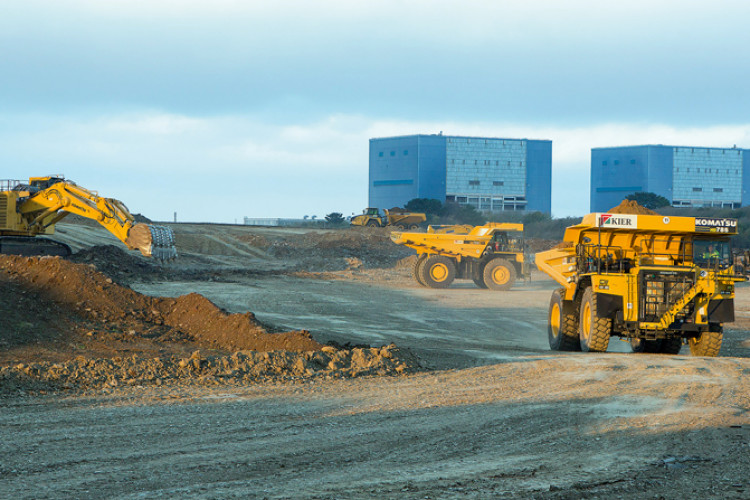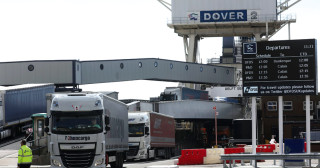When the Construction Equipment Association (CEA) arranged to hold its annual conference eight days before the UK was due to exit the EU, the organisation presumably believed the terms of the exit agreement would be widely known, and delegates could discuss its implications for the UK’s plant industry.
As it was, the day of the conference coincided with prime minister Theresa May’s appearance before EU ministers to request an extension to the Brexit deadline, leaving the construction equipment industry as unclear as everyone else what the possible implications of EU withdrawal are likely to be.
The CEA’s conference programme included one session specifically designed to address the Brexit issue: a workshop on “Terms of trade – UK/EU import and export issues in a post-Brexit world”.
In that session Jim Fanshawe, founder and director of business consultant Your Export Department, prefaced his presentation by saying: “I’m hoping that everything I say, you’ve already done or are thinking about.” A show of hands suggested otherwise, as the audience of manufacturers and equipment suppliers admitted they had not yet taken many of the steps he was outlining.
“The majority of businesses touch the EU in one form or another,” Fanshawe says. “It’s not just exports that link you to the EU: it could be your suppliers, your employees or a parent company, sister company or subsidiary.
“Even if you’re not exporting at all, what your supply chain is doing could mean you’re suffering because of currency rates, so getting to know your supply chain is one of the key factors.”
Fanshawe, whose company advises firms on export issues and carries out Brexit impact analysis, says businesses will be affected by Brexit at many levels, including its impact on employees, VAT, CE-marking, product regulation and compliance, trademarks, trade and custom, contracts, foreign exchange and export strategy.
Most of these issues will impose additional administration burdens on firms at the very least, says Fanshawe, while others will require the involvement of experts like patent attorneys, logistics companies and foreign exchange advisors.
On the subject of regulation, for example, Fanshawe says: “The thing to remember with regulation is that, regardless of where you export in the world, your product has to conform with [local] regulations. That means you are still going to have to conform to EU standards if you are exporting to the EU, which might mean you will need to have two checks, one for the UK and one for the EU. Your product doesn’t have to change in any way, but it is an extra admin burden to check you are conforming both ways.”
And he advises exporters to look at their customs arrangements and to prepare for goods to be delayed at the border. “There’s going to be a bit of a bumpy road regardless of what happens, and this may lead to border delays,” says Fanshawe. “You need to be in the best position to manage this, so I would suggest you review the clauses in your contracts with customers and suppliers, because there could be a few extra days you need to add on.”
He also warns that warehouse capacity in the UK is very limited, so manufacturers should speak to their logistics providers to find out if they have availability to store goods in the event of border delays.
According to Fanshawe, exit from the EU will add complications to many aspects of what has previously been a fairly straightforward trading environment between UK manufacturers and their customers and suppliers elsewhere in the EU. But this can be managed, he says: “It comes down to relationships. As long as you’re on top of any impacts like additional time or cost, then you can reassure your customers you’re on top of issues.
“If your customers in the EU think it’s going to get harder to buy a product from you, they’ll look elsewhere.”
As yet, the prospect of Brexit has not had a direct impact on sales of construction machinery in the UK, according to Chris Sleight, managing director of Off-Highway Research, who revealed the company’s most recent analysis into the global construction equipment market at the CEA event.
“So far, Brexit hasn’t really affected the UK market,” says Sleight,” but it is a question of how long the industry can continue to soldier on. We have seen a strong housing market – especially in the south-east – and some major infrastructure projects, but as Brexit drags on, companies don’t have certainty to invest. And if the [Brexit] result is a poor one, it will harm the industry.”
Sleight says the global construction equipment market has never been more buoyant. A total of 1.12m machines were sold worldwide last year, compared with 894,000 in 2017. “Quite an unusual thing has happened,” he explains. “In the last two years, [sales in] pretty much all the major markets and regions have moved up.”
'Even if you don't export, trade with the EU post-Brexit will have some impact on your supply chain.' Founder and director of business consultant Your Export Department, Jim Fanshawe

China is by far the largest market for plant, accounting for 26% of the total value; then comes North America at 17% and Europe at 16%. All three regions currently have very buoyant construction sectors, although Sleight believes they may have reached their peak.
“Europe has seen fairly convincing growth over the last two or three years, but we feel the market has peaked,” he says. “Last year’s growth took us by surprise, and we don’t see much scope for the market to get very much bigger.”
Sleight adds: “For most of the time in recent history, Europe been a net exporter of machines. More recently, we’ve seen that gap close a little bit.”
He says between 10,000 and 15,000 more machines are produced in Europe than bought in the region – but that number is reducing. A lot of the equipment made in Europe is high-specification, high emissions-standard machinery, and places like Africa and the Middle East, where standards are lower, are now being served by China. “It does raise the question about what is Europe’s place in the global marketplace,” adds Sleight.
Sleight says he expects global sales of construction equipment to flatten out followed by a moderate downturn, but sales should continue to be high. However, he warned against trying to predict too far ahead: “It’s confidence and certainty that’s most important in this market, and what we see in the world today – since the [financial] crisis – is uncertainty and unpredictability.”
UK construction equipment manufacturers last year produced around 60,000 machines, earning them about £13bn in revenue, according to Knibb Gormezano & Partners managing director Alex Woodrow, who is currently preparing a report on the state of the industry.
The success of the sector is due in part to massive infrastructure projects like HS2, Hinkley Point C and Highways England’s current £15bn five-year roads programme (RP1). All three of these mega-projects and programmes were discussed at the CEA conference, and while they present opportunities for the plant sector, they are not without their challenges.
Highways England procurement team leader Paul Whitehead says: “We want construction innovation, but the short-term issue for me is around have we got enough plant operators? You can sell as many machines as you like but if you haven’t got the people to operate them, they’re not any good.”
He says Highways England has identified a “big spike” in the amount of construction equipment it thinks will be needed for road building programmes between now and 2025. But he adds: “We’re not the only infrastructure programme out there.”
One of the others is the new Hinkley Point C nuclear power station being built by EDF. The scale of the project is enormous, as is its requirement for plant and skilled operators: there are currently almost 4,000 people working on site, 18 tower cranes have been erected so far out of a total of 52, a total of 5.6 million cubic metres of muck have to be shifted, and three million tonnes of concrete will be needed.
EDF senior construction delivery lead Andy Gibbons wants the plant sector to innovate to make construction operations safer. “We want to do everything we can do to move people away from moving equipment and moving plant,” he says.
Contractors on site have already introduced technologies that make work safer and more efficient, including a beam lifter so ground nails can be installed mechanically, and Bomag compactors fitted with equipment identifying which areas have been compacted and how many passes the machine has done. “That’s good because it’s taking away a person being in close proximity of a machine,” says Gibbons.
The project will have 50,000 crane lifts per month when all the tower cranes are in place, and there is a site-wide policy that cranes are not allowed to lift over people. As a result, the Tier 1 contractors on site are keen to use the best technologies to makes sure crane movements are restricted to permitted zones.
Woodrow says equipment manufacturers will have to collaborate more closely with the wider construction industry in future to answer some issues of sustainability, productivity and skills: “The industry’s culture is going to have to continue to develop; more and more collaborating will be required.”
This article was first published in the April 2019 issue of The Construction Index magazine
UK readers can have their own copy of the magazine, in real paper, posted through their letterbox each month by taking out an annual subscription for just £50 a year. Click for details.
Got a story? Email news@theconstructionindex.co.uk




